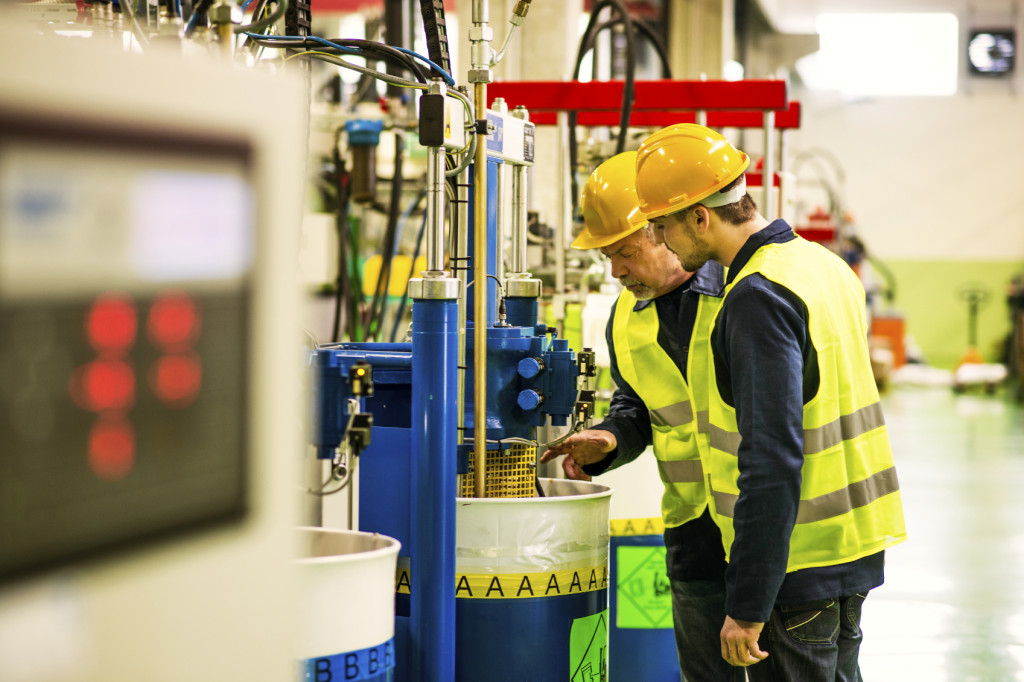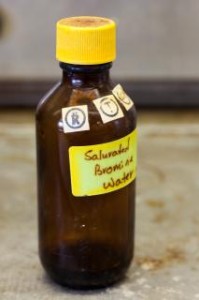COSHH, the Control of Substances Hazardous to Health Regulations 2002, is the UK law that requires employers to control substances that are hazardous to employee health. The introduction of COSHH regulations more than 25 years ago, has been proven by scientific evidence to have consistently reduced the level of exposure to hazardous substances. There are penalties ranging from fines to more serious punishments for individuals or companies found to be in breach of these regulations.
Both the manufacturing and construction industries present a greater number of potential workplace hazards than any other industry, with chemical hazards one of the core threats in a manufacturing workplace. COSHH regulations exist in the workplace to protect employees against injury and to protect an employer against employee injury claims. Ensuring complete chemical safety compliance in a manufacturing environment is therefore ever so important. There are some items which you need to address to help ensure that your company is COSSH compliant:
Assess Risks & Decide on Precautions
When it comes to chemical safety, prevention is always better than cure. It is important to assess and identify any chemical risks and decide on appropriate precautions. For example, if your company uses highly flammable chemicals, it might be wise to rule that only certain, knowledgeable, senior staff members handle such chemicals so as to minimise the risk of chemical fire. Another precaution would be to segregate the substances in a flammable storage unit. Chemical safety risks should be frequently assessed, on a yearly basis, if environments or situations change or if you feel that the previous assessment is no longer valid.
Labelling of Chemicals
Under the Chemicals (Hazard Information and Packaging for Supply) regulations (CHIPS), chemical suppliers are legally required to label hazardous substances. However, within a manufacturing facility, chemicals can often get switched from their original containers, hence it is important to ensure that all chemicals, whether in their original containers or not, are appropriately labelled, with any important data as per the MSDS.
Create an Accident & Emergency Plan
A key element of COSHH compliance is to ensure that everyone in the workplace knows exactly how to deal with any chemical incidents. These can vary from chemicals spills to chemical burns to chemical fires and more. It is important that a plan is put in place to address every potential type of chemical accident that could occur within your manufacturing facility, including evacuation plans where necessary.
Keep Consistent Records
All manufacturing facilities which have chemicals on-site are liable to be subject to on-site inspections by a governing body appointed health and safety inspector. In order to demonstrate complete COSHH compliance to an inspector, it is vital that you keep accurate records of any chemical incidents, policy updates, training sessions conducted, prevention methods introduced and evidence of chemical stock control. Installing a health and safety software system is highly recommended to ensure efficient and effective management of all relevant chemical safety records.
Ensure Employees are Trained & Knowledgeable
All employees, even temporary staff, should be trained and knowledgeable about ensuring chemical safety in the workplace. This training should be facilitated by a certified health and safety expert. The ability to read through a MSDS is not enough; employees need to fully understand the danger of chemical hazards and how to store chemicals correctly. Employees must completely understand and value their responsibilities regarding chemical safety.
Supply PPE Equipment Where Needed
Where an employee is required to use chemicals which can damage their health in any way i.e. inhaling toxic vapours or burning the skin, PPE (personal protective equipment) must be provided in order to ensure complete chemical safety compliance. Types of PPE include eye protection goggles, respirators, protective gloves, footwear and clothing. If chemical use could damage employee health, you must enforce a mandatory rule in your health and safety policy whereby the employee is required to wear PPE when handling certain chemicals.
Ensuring complete chemical safety compliance is in the best interests of all those involved in a manufacturing facility, from shareholders to managers to ground floor workers. Taking all of the above points into account, how compliant is your manufacturing business?



